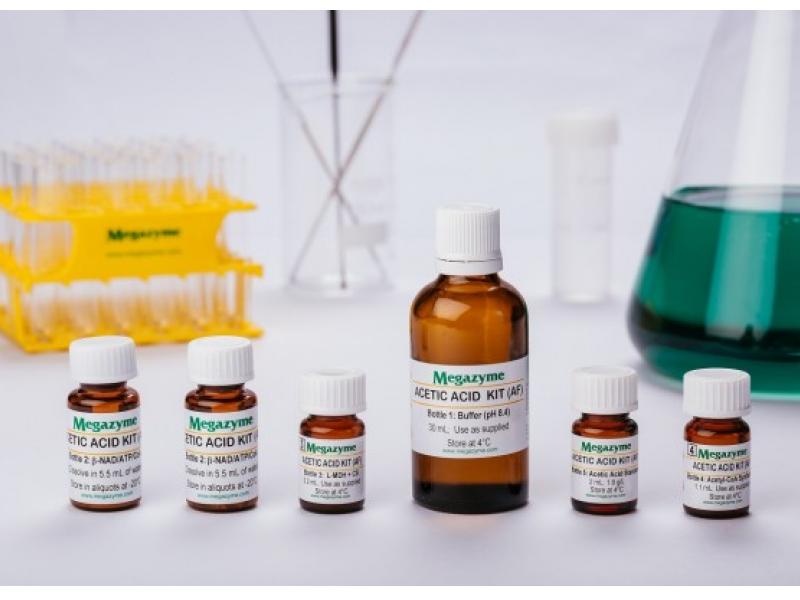Acetic acid - Enzymatic assay kit (Acetyl-CoA Synthetase - Auto-analyseur format)
Reference : K-ACETAF
Method for the specific measurement of acetic acid (acetate) in beverages and food products
Countries eligible for delivery
Countries eligible for delivery:
France (except Corsica and overseas departments and territories), Algeria, French overseas departments and territories, French Polynesia, Libyan Arab Jamahiriya, Morocco, Tunisia, Egypt, France (Corsica)
Method for the specific measurement of acetic acid (acetate) in beverages and food products
Shipping temperature: ambient
Storage temperature:
- Short term stability: 2-8oC,
- Long term stability: see individual component labels
Assay format: auto-analyser
Detection method: absorbance - 340
Signal response: increase
Linear range: up to 30 μg/mL of acetic acid per assay
Reaction time: ~ 15 minutes
Detection limit: 10 mg/l
Method recognition: methods based on this principle have been accepted by EN, ISO, ICUMSA, IFU and MEBAK
Stability: > 2 years under recommended storage conditions
Shipping temperature: ambient
Storage temperature:
- Short term stability: 2-8oC,
- Long term stability: see individual component labels
Assay format: auto-analyser
Detection method: absorbance - 340
Signal response: increase
Linear range: up to 30 μg/mL of acetic acid per assay
Reaction time: ~ 15 minutes
Detection limit: 10 mg/l
Method recognition: methods based on this principle have been accepted by EN, ISO, ICUMSA, IFU and MEBAK
Stability: > 2 years under recommended storage conditions
- No wasted ACS solution (stable suspension supplied)
- PVP incorporated to prevent tannin inhibition
- Very stable reagent when prepared for auto-analyser applications (> 3 days at 4°C)
- All reagents stable for > 2 years after preparation
- Linear calibration up to 30 μg/ml of acetic acid in final reaction solution
- Validated by the University of Wine, Suze la Rousse, France
- Very competitive price (cost per mL of reagent)
Wine, beer, fruit and fruit juices, soft drinks, vinegar, vegetables, pickles, dairy products (e.g. cheese), meat, fish, bread, bakery products (and baking agents), ketchup, soy sauce, mayonnaise, dressings, paper (and cardboard), tea, pharmaceuticals (e.g. infusion solutions), feed and other materials (e.g. biological cultures, samples, etc.)
Data Booklet
Safety data sheet
The attached documents are subject to change. To receive the latest updates, please contact us.
Specifications
| Reference | Packaging | |
|---|---|---|
| K-ACETAF | 141.6 ml de réactif préparé R1+R2 (e.g: 456 assays of 0.31 mL) |


